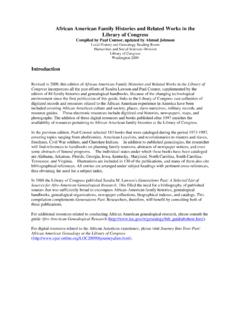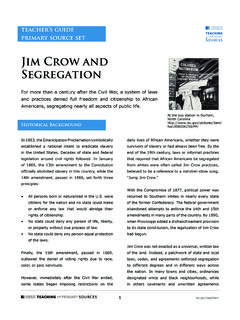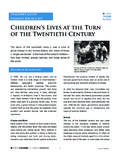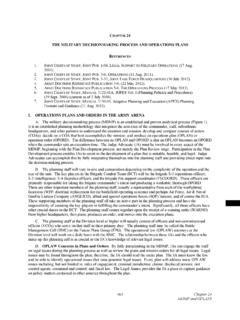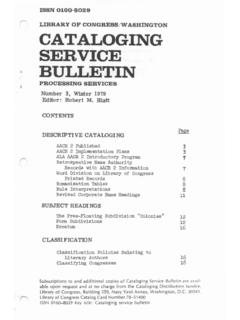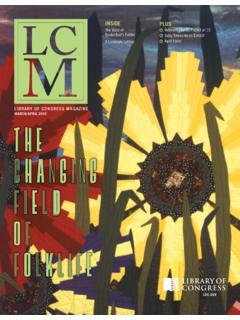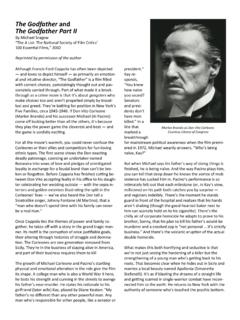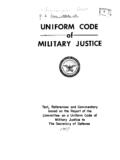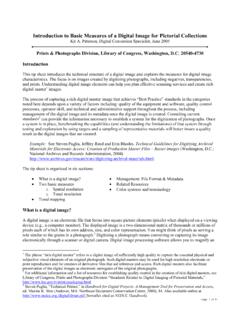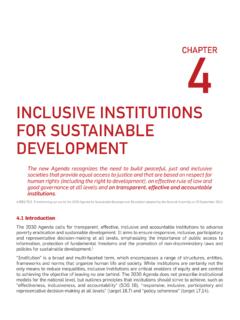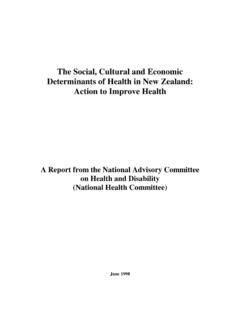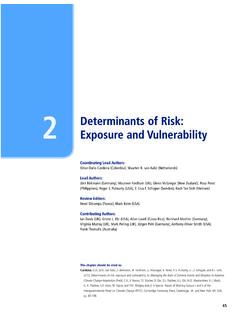Transcription of Women in Islamic Societies: A Selected Review of Social ...
1 Women IN Islamic SOCIETIES: A Selected . Review OF Social SCIENTIFIC LITERATURE. A Report Prepared by the Federal Research Division, Library of Congress under an Interagency Agreement with the Office of the Director of National Intelligence/National Intelligence Council (ODNI/ADDNIA/NIC) and Central Intelligence Agency/Directorate of Science & Technology November 2005. Author: Priscilla Offenhauer Project Manager: Alice Buchalter Federal Research Division Library of Congress Washington, 20540 4840. Tel: 202 707 3900. Fax: 202 707 3920. E-Mail: Homepage: p 57 Years of Service to the Federal Government p 1948 2005. Library of Congress Federal Research Division Women in Islamic Societies PREFACE.
2 Half a billion Muslim Women inhabit some 45 Muslim-majority countries, and another 30. or more countries have significant Muslim minorities, including, increasingly, countries in the developed West. This study provides a literature Review of recent empirical Social science scholarship that addresses the actualities of Women 's lives in Muslim societies across multiple geographic regions. The study seeks simultaneously to orient the reader in the available Social scientific literature on the major dimensions of Women 's lives and to present analyses of empirical findings that emerge from these bodies of literature. Because the scholarly literature on Muslim Women has grown voluminous in the past two decades, this study is necessarily selective in its coverage.
3 It highlights major works and representative studies in each of several subject areas and alerts the reader to additional significant research in lengthy footnotes. In order to handle a literature that has grown voluminous in the past two decades, the study includes an Introduction and a section on The Scholarship on Women in Islamic Societies that offer general observations bird's eye views of the literature as a whole. The Introduction describes the two main sources of the Social scientific studies on Women in Muslim communities, namely, 1) academic programs on Women worldwide that emerged under the impetus of post-1970s Women 's movements and 2) international and national economic development agencies that came to see Women 's disadvantaged status as a hindrance to development.
4 It also describes the broad thrust of the Social scientific literature on various spheres or dimensions of Muslim Women 's lives: ideology, law, family, economy, and politics. The Scholarship on Women in Islamic Societies section describes features that pervade the entire literature. One feature is that the studies tend to align themselves on a spectrum between two interpretive poles, one relatively negative, the other positive, about the situation of Women in Islamic societies. The second feature is that the literature is highly uneven in its coverage, with a disproportionate representation, in particular, of the Middle East and North Africa region. It also discusses the sources of the primary data upon which researchers draw in studies across a variety of fields and describes two types of work that make up the literature on Women in Muslim societies, specialized microstudies and projects of consolidation.
5 The final section Dimensions of Women 's Status and Bodies of Research characterizes the bodies of literature that have developed to illuminate particular dimensions of Women 's lives. This portion covers, in separate sections, the substantial bodies of Social scientific work that have developed on each of the following major dimensions of Women 's experience and condition: religious ideology, law, demography, family, economics, and politics. i Library of Congress Federal Research Division Women in Islamic Societies TABLE OF CONTENTS. PREFACE .. i I. KEY FINDINGS .. 1. II. 5. Two Roads to the Social Scientific Study of Women in Muslim Cultures .. 5. Monolithic Stereotype Succumbs to Multi-Faceted Empirical Studies on Muslim 9.
6 III. THE SCHOLARSHIP ON Women IN Islamic SOCIETIES .. 13. General Features of the Scholarly Literature .. 13. Two Interpretive Poles in the 13. Uneven Representation of Different Regions, Nations, and Classes .. 15. Assessing Women 's Status: Categories of Data, Categories of Scholarly Work .. 18. The Production of Data and Research 18. Specialized and Microstudies .. 24. Consolidation of Knowledge about Women in Islamic 26. IV. DIMENSIONS OF Women 'S STATUS AND BODIES OF RESEARCH .. 27. Sex-Role Ideologies and Feminist Discourses: Examining Sacred Texts and Contexts .. 27. Legal Contexts: Women 's Legal Position and Rights .. 32. Dual Legal Systems and Family Law Reform: Challenging the Substance of Laws.
7 33. Muslim Family Law in Contemporary and Historical Practice .. 41. Demographics, Health, and Education: Ongoing Sociological Modernization .. 46. The Demographic 47. Beyond Demography's 55. Marriage, Family, Household, and Everyday Life .. 56. The Neopatriarchal Family and the Role of the State .. 58. Attitudes and Actualities: The Neopatriarchal 60. The New Work on Taboo Subjects: Violence and Female Circumcision .. 64. Women and the Productive Economy: Necessity or Empowerment? .. 71. When Women Go to Market: Women in Paid Labor in Muslim 73. Structural Features That Explain the Labor Force Experience of Muslim Women .. 77. Studies on Women 's Participation in the Informal 80.
8 Microlevel Empirical Field Studies .. 83. Women in Muslim States and Politics .. 87. Formal Politics: Office-Holding and Electoral 87. Women 's Activism for Building the Nation, Development, and Human/ Women 's Rights .. 91. V. 93. Selected 95. iii Library of Congress Federal Research Division Women in Islamic Societies I. KEY FINDINGS. General Observations More than half a billion of the Women in the world are Muslim. They are concentrated in approximately 45 Muslim-majority countries in a broad belt from Senegal to the Philippines, with the largest number on the South Asian subcontinent. The most populous single Muslim-majority nation is Indonesia. Monolithic stereotypes of Muslim Women have long prevailed in the West, distorting the enormous interregional, intraregional, and class variations in their circumstances and status.
9 Serious Social scientific scholarship on Women worldwide was scarce until the 1970s. Since then the study of Women , including Muslim Women , has exploded. The Social science literature on Muslim Women is now voluminous and growing. The Western understanding of Muslim Women remains unduly influenced by evidence from a single region. The Social science scholarship most familiar to the West about Muslim Women focuses disproportionately on the Middle East and North Africa region (MENA). Often seen as the land of Muslims par excellence, MENA is home to fewer than 20 percent of the world's Muslims. Women in Muslim societies and communities face gender -based inequalities associated with the so-called patriarchal gender system.
10 Aspects of this originally pre-capitalist system persist in rural areas across a wide swath of lands, both Muslim and non-Muslim, from East Asia to North Africa. The system, regardless of religion, features kin-based extended families, male domination, early marriage (and consequent high fertility), restrictive codes of female behavior, the linkage of family honor with female virtue, and occasionally, polygamous family structure. In Muslim areas, veiling and sex-segregation form part of the gender system. Most current scholarship rejects the idea that the Islamic religion is the primary determinant of the status and conditions of Muslim Women . Because of the wide variation in Muslim Women 's status and conditions, researchers typically attribute more causal salience to determining factors that themselves vary across nations and regions.
